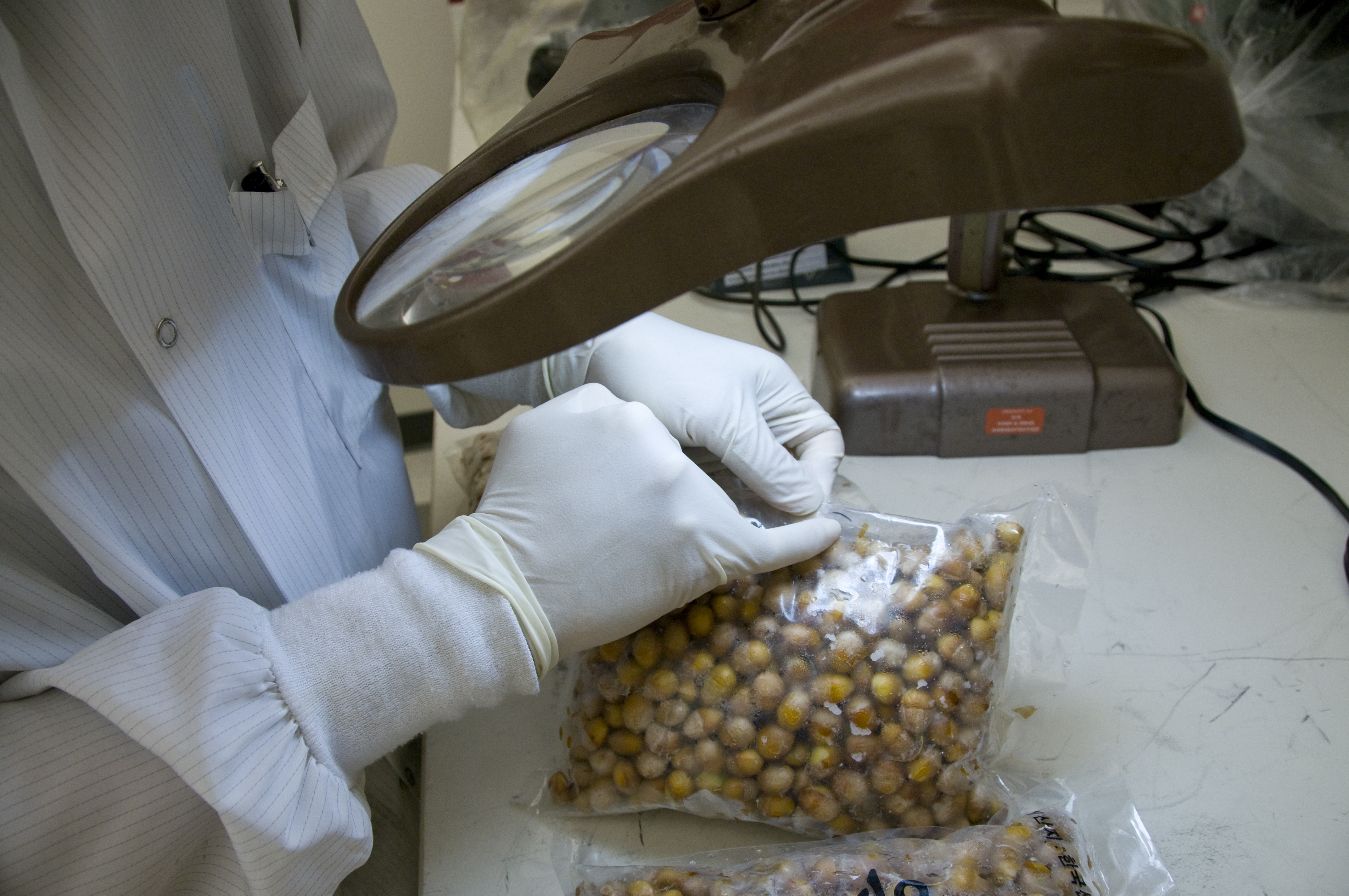User:Shawndouglas/sandbox/sublevel4
Title: What standards and regulations affect a food and beverage laboratory?
Author for citation: Shawn E. Douglas
License for content: Creative Commons Attribution-ShareAlike 4.0 International
Publication date:
Introduction
This brief topical article will examine the standards, regulations, and other factors globally influencing not only the demand for food and beverage laboratories, but also how they conduct their activities.
Globally recognized food safety standards
Implementing and maintaining conformance to internationally recognized and benchmarked food safety standards benefit the food and beverage organization in a number of ways[1][2]:
- It increases customer confidence through the organization's audited certification to the standard, taking the place of customers' own auditing methods to ensure quality and authenticity, in turn reducing time and costs.
- It drives organizations to better monitor their activities for non-conformities, identify root causes, and develop preventative controls, while clearly reporting such efforts to customers, further reducing the need for customer audits.
- It better ensures a rigorous and comprehensive approach to product safety, quality, integrity, and legality, in many cases meeting or exceeding local, state, federal, and/or international legislative requirements.
- It drives organizations to better vet their suppliers and service providers for meeting required food safety management practices.
- It enables organizations to better demonstrate auditable compliance with modern food safety management practices.
- It allows organizations to limit product recalls, reduce customer complaints, and better protect their brand.
British Retail Consortium (BRC) Global Standard for Food Safety (GSFS)
In 1998, the British Retail Consortium (BRD) published the first edition of its Global Standard for Food Safety (GSFS), going on to becoming an internationally recognized standard of best practices in food manufacturing, storage, and distribution, and the first food safety standard to be recognized by the Global Food Safety Initiative (GFSI). The standard covers stakeholder buy-in on continual improvement, food safety plan development, food quality management system development, manufacturing and storage site standardization, product and process control, personnel management, risk management, and trade product management.[1][2][3][4] The standard is implemented by an organization through gap assessment, documentation development, consultation and assessment, internal auditing, and resolving non-conformances to the standard.[2]
Codex Alimentarius
The Codex Alimentarius is a collection of internationally recognized set of food and feed standards and guidelines developed as a joint venture between the United Nation's Food and Agricultural Organization (FAO) and the World Health Organization (WHO).[3] The Codex "is intended to guide and promote the elaboration and establishment of definitions and requirements for foods to assist in their harmonization and in doing so to facilitate international trade."[5] Scope of the standards is broad, covering food hygiene; food additives and contaminants, including pesticides and drugs; packaging and labelling; sampling and analysis methods; and import and export inspection and certification.[5] It's not unusual for governments to approach the FAO seek help with harmonizing national legal frameworks of food safety with the Codex Alimentarius.[6] Among the Codex, some of the more broadly useful standards include General Principles of Food Hygiene (CXC 1-1969)[7], General Standard for Contaminants and Toxins in Food and Feed (CXS 193-1995), and General Methods of Analysis for Contaminants (CXS 228-2001).[7]
Global Food Safety Initiative (GFSI)
- GFSI Benchmarking Requirements: https://mygfsi.com/news-and-resources/?_news_topics=benchmarking&_type=publications&_date=2022%2C2021 and https://mygfsi.com/press_releases/gfsi-releases-new-edition-of-benchmarking-requirements/
Hazard analysis and critical control points (HACCP)
Hazard analysis and critical control points
International Featured Standards (IFS)
International Organization for Standardization (ISO) 22000
- Food Technology at ISO: https://www.iso.org/ics/67/x/ includes https://www.iso.org/standard/44001.html, https://www.iso.org/standard/60969.html, and https://www.iso.org/standard/66126.html
Safe Quality Food (SQF)
Regulations and laws around the world
Food Safety Act 1990 and Food Standards Act 1999 - United Kingdom
Food Safety Act 1990 and Food Standards Act 1999
- https://www.scarborough.gov.uk/home/business-licensing-and-grants/food-hygeine/food-safety-regulations
- https://www.food.gov.uk/about-us/key-regulations
Food Safety and Standards Act of 2006 - India
- https://prsindia.org/policy/report-summaries/implementation-food-safety-and-standards-act-2006
- https://fssai.gov.in/cms/food-safety-and-standards-act-2006.php
Food Safety Law - China
- https://apps.fas.usda.gov/newgainapi/api/report/downloadreportbyfilename?filename=Amended%20Food%20Safety%20Law%20of%20China_Beijing_China%20-%20Peoples%20Republic%20of_5-18-2015.pdf
- https://leap.unep.org/countries/cn/national-legislation/food-safety-law-2015
Food Sanitation Act and Food Safety Basic Act - Japan
- https://www.japaneselawtranslation.go.jp/en/laws/view/3687/en
- https://www.fsc.go.jp/english/basic_act/fs_basic_act.pdf
- https://resourcehub.bakermckenzie.com/en/resources/asia-pacific-food-law-guide/asia-pacific/japan/topics/food-product-and-safety-regulation
Food Safety Modernization Act (FSMA) - United States
- FDA FSMA rules: https://www.fda.gov/food/food-safety-modernization-act-fsma/fsma-rules-guidance-industry#rules
- USDA Sanitation and Quality Standards: https://www.nal.usda.gov/legacy/fsrio/sanitation-and-quality-standards-0
- The current US food safety system: https://www.ncbi.nlm.nih.gov/books/NBK209121/
- LAAF: LII:FDA Food Safety Modernization Act Final Rule on Laboratory Accreditation for Analyses of Foods: Considerations for Labs and Informatics Vendors
General Food Law Regulation (GFLR) - European Union
https://food.ec.europa.eu/horizontal-topics/general-food-law_en
Safe Foods for Canadians Act (SFCA) - Canada
- https://laws-lois.justice.gc.ca/eng/acts/s-1.1/index.html
- https://inspection.canada.ca/food-safety-for-industry/toolkit-for-food-businesses/sfcr-handbook-for-food-businesses/eng/1481560206153/1481560532540?chap=0
- https://www.gov.mb.ca/agriculture/food-safety/at-the-food-processor/safe-food-for-canadians-act.html
Other influencing factors
Good manufacturing practice (GMP)
Conclusion
This brief topical article sought to answer "what standards and regulations affect a food and beverage laboratory?" It notes that
References
- ↑ 1.0 1.1 Pavlović, A. (26 June 2017). "What is BRC? Global food safety standard explained". Ideagen Blog. Ideagen Limited. https://www.ideagen.com/thought-leadership/blog/what-is-brc-global-food-safety-standard-explained. Retrieved 10 November 2022.
- ↑ 2.0 2.1 2.2 "BRCGS - British Retail Consortium Global Standard" (PDF). Perry Johnson Food Safety Consulting, Inc. April 2020. https://www.pjfsc.com/Downloads/BRC-Overview.pdf. Retrieved 10 November 2022.
- ↑ 3.0 3.1 "Food Safety and Quality Regulations: A Guide to Global Standards" (PDF). Eagle Product Inspection. May 2019. https://vertassets.blob.core.windows.net/download/45fe7af4/45fe7af4-0500-4163-bd2b-5dd34e824bfd/eagle_wp_food_safetyquality_regulations_guide_a4_en.pdf. Retrieved 10 November 2022.
- ↑ British Retail Consortium (August 2018). "Global Standard Food Safety" (PDF). British Retail Consortium. https://cdn.scsglobalservices.com/files/program_documents/brc_food_standard_8_0.pdf. Retrieved 10 November 2022.
- ↑ 5.0 5.1 "About Codex Alimentarius". Food and Agricultural Organization. 2022. https://www.fao.org/fao-who-codexalimentarius/about-codex/en/#c453333. Retrieved 10 November 2022.
- ↑ "Food laws & regulations". Food and Agricultural Organization. 2022. https://www.fao.org/food-safety/food-control-systems/policy-and-legal-frameworks/food-laws-and-regulations/en/. Retrieved 10 November 2022.
- ↑ 7.0 7.1 "Codes of Practice". Codex Alimentarius. Food and Agricultural Organization. 2022. https://www.fao.org/fao-who-codexalimentarius/codex-texts/codes-of-practice/en/. Retrieved 10 November 2022.
Cite error: Invalid
<ref>tag; name "FAOCodes22" defined multiple times with different content










